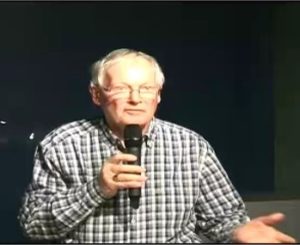Type de ressources : Vidéo
Un laser de la Terre à la Lune
26th General Conference on Weights and Measures (CGPM)
The 26th General Conference on Weights and Measures (CGPM) took place in Versailles in November 2018. At this meeting, the CGPM to approved a resolution to revise the definitions of the International System of Units, the SI, which is based on the second, the metre, the kilogram, the ampere, the kelvin, the mole and the candela (the SI base units).
Over the last 50 years, scientists have measured constants of nature, such as the speed of light and the Planck constant, with increasing accuracy; indeed the metre was already redefined back in 1983 in terms of the speed of light. The inherent stability of these constants make them ideal for underpinning new definitions of the SI units and preparing the measurement system to meet the future demands of science and technology.
The SI will be based on seven physical constants, and thus inherently stable. Most notably, this will mark the end of the last remaining physical artefact in the SI system – a cylinder of metal known as the International Prototype of the Kilogram.
The work needed to reach this point has taken many years, and has been a truly international effort. The universality of access that it will afford has been a long-standing goal for the metric system, dating back more than 200 years.
=> More d’information.
La fabrique du temps
Il y a cinquante ans, le 13 octobre 1967, la seconde, unité de mesure du temps, était définie non plus par les astres mais par les atomes. Dans cette quête de la précision, les scientifiques inventent aujourd’hui les horloges du futur, qui permettront non seulement d’exprimer le temps avec encore plus de finesse, mais de revisiter les lois fondamentales de la physique.
Refonte annoncée du Système International d’Unités : enjeux et perspectives
Le système global de mesure qui repose sur le Système International d’Unités (SI) est le cadre actuel assurant la fiabilité et l’exactitude des mesures au niveau international. Un tel système de mesure, transnational et réellement global est indispensable au commerce, à l’industrie et donc développement de nos sociétés modernes. En 2018 le Comité International des Poids et Mesures (CIPM) prévoit de redéfinir le SI. Cette redéfinition consistera principalement à fixer la valeur d’un jeu de constantes fondamentales dimensionnées (la valeur de la constante de Boltzmann kB, par exemple, sera fixée pour redéfinir le kelvin). Cette réforme profonde de notre système de mesure qui reposera sur les meilleures déterminations des constantes fondamentales a pour objectif la mise en place d’un SI plus simple et plus cohérent.
Après un rappel historique sur l’évolution du système d’unités, de la Révolution française à nos jours, nous présentons les enjeux et perspectives de la refonte annoncée du Système International d’Unités.
La relativité selon Einstein
Albert Einstein a révolutionné le monde des sciences avec les théories de la relativité restreinte et générale : mais au fait, c’est quoi la relativité ? Réponse avec Marie-Christine Angonin, Professeure à l’Université Pierre et Marie Curie et à l’Observatoire de Paris (laboratoire SYRTE).
Cette vidéo est issue de la série Genius, diffusée par National Geographic en 2017, qui revient sur l’aventure semée d’embûches du physicien devenu une icône : Albert Einstein.
https://www.facebook.com/NatGeoFrance/videos/1527978077236143/
Pendules géants du Cirque Plume
L’internationalisation de l’heure
Oscillations artistiques de pendules
La mesure du temps
The power of cross-correlating: from GPS reception to passive RADAR using SDR
CDMA systems rely on encoding data streams radiated by multiple emitters on the same carrier frequency with (ideally) orthogonal codes. Recovering the signal from each emitter requires identifying the code assiociated with each source, which hence also requires recovering the carrier to account for relative emitter/receiver motion (Doppler shift), thermal drift and oscillator bias. We demonstrate this concept with the reception of GPS signal — a constellation of satellites orbiting 20000 km over the surface of the earth — with 20 euro worth of equipment centered on a DVB-T receiver designed for receiving neighbouring television signals. We extend the concept to passive radar, in which a radiofrequency emitter (television, broadcast radio) signal reflected on a mobile target is used for identifying the velocity and position of the target. In this approach, no active source is needed: RADAR measurement is only a matter of correlating the direct and reflected signal, after identifying the Doppler induced frequency shift.
Slides + Video available at https://archive.fosdem.org/2015/schedule/event/xcorr/

